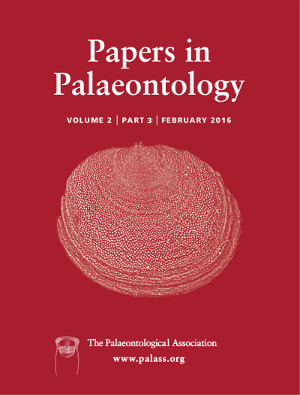Reg. Charity No. 1168330

Xianella hongii gen. et sp. nov. is described from the Middle–Late Ordovician of Shaanxi, China and interpreted as a calcified cyanobacterial sheath. Xianella filaments formed cable‐like strands that constructed thick fenestral layers. The specimens occur in metre‐sized limestone blocks, possibly derived from local collapse of a reefal platform margin. In combination with micrite, some of which is intraclastic and peloidal, Xianella created thick and extensive stacks of layered calcified fenestral fabric that appear to be synsedimentarily calcified open‐frame mat deposits. The fenestrae range from small, laminose and very irregular, to large equidimensional areas ~2 cm across. Fenestrae with rounded outlines resemble primary gas bubbles observed in present‐day microbial mats. These delicate fabrics are comparable in structure and quality of preservation with those of some Proterozoic silicified stromatolitic mats.